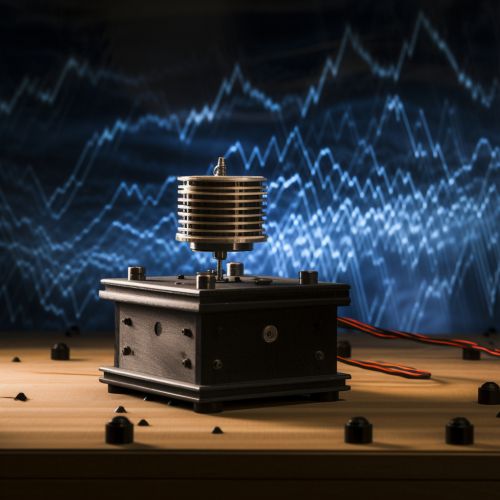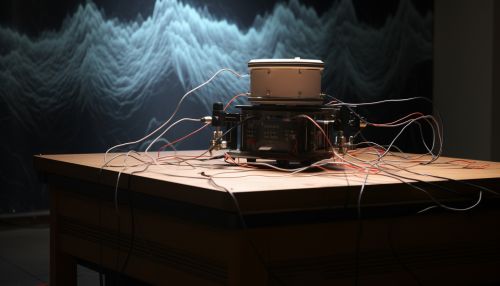Seismic wave
Introduction
Seismic waves are waves of energy that travel through the Earth's layers, and are a result of earthquakes, volcanic eruptions, magma movement, large landslides and large man-made explosions that give out low-frequency acoustic energy. Many other natural and anthropogenic sources create low-amplitude waves commonly referred to as ambient vibrations. Seismic wave fields are recorded by a seismometer, hydrophone (in water), or accelerometer.
Types of Seismic Waves
There are several different kinds of seismic waves, and they all move in different ways. The two main types of waves are body waves (often termed P and S waves) and surface waves (Love and Rayleigh waves). There are also normal modes, which are not waves but rather resonate.
Body Waves


Body waves travel through the interior of the Earth. They follow curved paths because of the varying composition and density of the Earth's interior. This effect is similar to the refraction of light waves. Body waves are further categorized into P (Primary) waves and S (Secondary) waves.
P Waves
P waves, or Primary waves, are the first waves to arrive at a seismograph. P waves are the fastest seismic waves and can travel through solid, liquid, or gas. They leave behind a trail of compressions and rarefactions on the medium they move through. P waves are also called pressure waves for this reason. The speed of P waves can be calculated using the formula: Vp = √((K + 4μ/3) / ρ), where K is the bulk modulus (the modulus of incompressibility), μ is the shear modulus (the modulus of rigidity), and ρ is the density of the material through which the wave propagates.
S Waves
S waves, or Secondary waves, are the second waves to arrive at a seismograph. S waves are slower than P waves and can only move through solid rock. This is because liquid and gas do not support shear stresses. S waves move rock particles up and down and side-to-side in roughly the same direction as the wave travels, in a shearing motion.
Surface Waves
Surface waves travel along the Earth's surface. They decay as they move away from the epicenter. Surface waves are slower than body waves and are generally the most damaging. Surface waves are further categorized into Love waves and Rayleigh waves.
Love Waves
Love waves are surface waves that cause horizontal shifting of the earth during an earthquake. A.L. Love, a British mathematician, predicted the existence of Love waves mathematically in 1911. Love waves travel with a lower velocity than P- or S- waves, but faster than Rayleigh waves.
Rayleigh Waves
Rayleigh waves, also called ground roll, are surface waves that travel as ripples with motions that are similar to those of waves on the surface of water (note that the associated particle motion at shallow depths is retrograde, and that the restoring force in ocean waves is gravity while in seismic waves it is elastic force). The existence of these waves was predicted by John William Strutt, Lord Rayleigh, in 1885. They are slower than body waves and Love waves.
Seismic Wave Propagation
Seismic waves propagate in all directions away from the source, like ripples on the surface of a pond after a stone is thrown into it. The velocity of seismic waves varies in different types of material. P waves travel fastest and are the first to be recorded at a seismograph. S waves travel slower and arrive next. Finally, surface waves arrive and typically cause the most destruction.
Seismic Wave Detection and Recording
Seismic waves are detected and recorded by seismographs. The recording they make is called a seismogram. The seismograph has a base that sets firmly in the ground, and a heavy weight that hangs free. When an earthquake causes the ground to shake, the base of the seismograph shakes too, but the hanging weight does not. The difference in position between the shaking part of the seismograph and the motionless part is what is recorded.
Seismic Wave Analysis
Seismic wave analysis involves studying the seismic waves recorded by a seismograph. This analysis can provide a lot of information about the earthquake, such as its location, its depth, and how much the Earth shook. Seismic wave analysis can also tell us a lot about the Earth's interior, because the speed and direction of the waves changes as they move through different materials.
Uses of Seismic Waves
Seismic waves are not only useful in studying earthquakes, but also in studying the Earth's interior, and in exploration for oil and gas. Seismic waves generated by man-made explosions or vibrating controlled sources are commonly used in these types of exploration.
